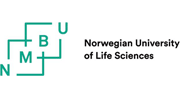Polychlorinated dibenzofurans (PCDF)
Known as: Dibenzofurans, PCDF
What are they? Polychlorinated dibenzofurans are a class of 135 toxic organochlorinated substances, classified as persistent organic pollutants in 2001. Not to mistake for furans or dibenzofurane. From the point of view of their behaviour in the living organisms and of their toxicity they are related to the PCBs and to dioxins (TCDD). The difference between dioxins and PCDF is that the latter have only one oxygen atom inserted in the benzene molecule.
Use (purpose): PCDF are tar fractions with no final use, an unintended emission resulting from plastic incineration in all its versions and from PCB incineration in the presence of oxygen during furniture waste burning, pesticide or fertilizer contaminated agricultural waste incineration, expired pesticides and fertilizers incineration.
They are also found in the exhaust fumes, accidental fires in storage facilities for PVC items or cars etc.
They are residual by-products in pesticide production process.
Dibenzofurans have a particularly long environmental persistence, accumulating at a high rate in the living organisms. Due to their persistence, dibenzofurans are transported by the elements and migratory animals, including in the Arctic regions, being detected in high concentrations in the blood of the native Arctic populations.
Present status: Starting with 2001, the Stockholm Convention classifies PCDF as some of the most dangerous persistent organic pollutants (“the Dirty Dozen”) produced unintentionally by human activities (Annex C). In order to reduce the quantity of produced PCDF, it is recommended to replace the existing waste elimination techniques with more modern ones, the obligation to use active carbon filters for furans’ absorption from the exhaust fumes of the cogeneration power plants and the ban of open air plastic incineration or in improvised heating devices or in artisanal fuel production facilities.
In Romania: same as for dioxins.
Health effects: PCDF are toxic, ecotoxic and carcinogenic.
Chronic exposure: functional disorders, especially for the reproductive system and especially due to the prenatal exposure. Immune function disorders (autoimmune diseases, immunodeficiency).
Acute exposure: same as for dioxins.
Exposure limits, lethal dose: -.
Contamination sources: - same as for dioxins. 95% through food, meaning animal origin products ingestion.
Userful links:






